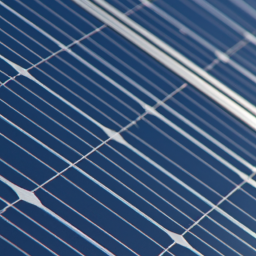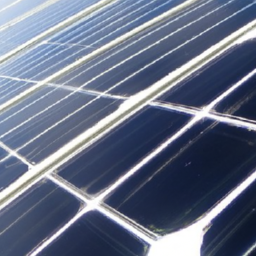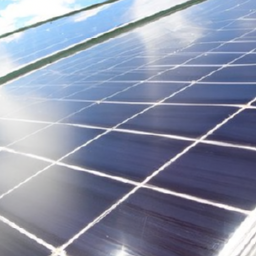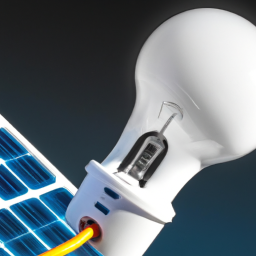Have you ever wondered if a solar generator can power your devices during cloudy days or even at night? It’s a common question that many people have when considering the use of solar energy. The good news is, solar generators can still work to some extent in less-than-ideal conditions. While they may not be as efficient as they would be in direct sunlight, they can still provide a reliable source of power.
During cloudy days, a solar generator can still generate electricity, although at a reduced rate. The amount of sunlight that reaches the solar panels plays a significant role in determining the generator’s output. Cloud cover reduces the amount of sunlight that can be absorbed by the panels, leading to a decrease in power production. However, modern solar generators are designed to collect and store energy efficiently, which means they can adapt to lower light conditions and still provide usable power.
As for nighttime operation, solar generators usually require sunlight to generate electricity. This is because they rely on photovoltaic cells that convert sunlight into electrical energy. Therefore, solar generators are not designed to work without direct sunlight. However, some solar generators come with additional features such as built-in battery storage or the ability to connect to external battery banks. These batteries can store excess energy generated during the day, allowing the generator to power devices during the night.
Introduction
In today’s world, where environmental concerns are at the forefront, solar energy has emerged as a sustainable and clean alternative to traditional sources of power. Solar generators have gained immense popularity in recent years, harnessing the power of the sun to generate electricity. However, many people wonder if solar generators can still operate efficiently during cloudy days or at night. In this article, we will explore the functionality of solar generators in different weather conditions and shed light on the advancements that have been made to overcome any obstacles.
Solar generator operation during cloudy days
Functionality of solar panels
Solar panels are the heart of solar generators. They convert sunlight into electrical energy through the photovoltaic effect, where photons from the sun’s rays knock electrons loose from atoms in the panel’s semiconductor material. However, clouds act as a barrier, reducing the sunlight reaching the solar panels and affecting their efficiency.
Impact of clouds on solar panel efficiency
Cloud cover can greatly impact the performance of solar panels. The thickness and density of clouds determine the amount of sunlight that reaches the panels. Dense clouds can reduce sunlight exposure significantly, resulting in a noticeable decrease in power generation. However, even on cloudy days, solar panels can still produce electricity, albeit at a lower efficiency compared to sunny days.
Adaptive technologies for cloudy weather
To counter the impact of clouds on solar panel efficiency, adaptive technologies have been developed. These technologies include algorithms that optimize system performance based on real-time weather data. Some solar generators are equipped with intelligent tracking systems that adjust the angle and orientation of the panels to maximize sunlight absorption. These adaptive technologies ensure that solar generators can continue to operate efficiently even during cloudy weather.
Solar generator operation at night
Absence of sunlight as an obstacle
One of the primary challenges faced by solar generators during nighttime is the absence of sunlight. Without sunlight, solar panels are unable to produce electricity through the photovoltaic effect. This hurdle makes it necessary to find alternative solutions to keep solar generators running.
Storage solutions for solar energy
To address the issue of nighttime operation, solar generators incorporate storage solutions. Excess energy generated during the day is stored in batteries or other energy storage systems. These batteries act as reservoirs, storing the excess solar energy for use during periods of low or no sunlight. When the sun goes down, solar generators switch to using the stored energy, ensuring continuous power supply even at night.
Battery technologies for nighttime usage
Battery technologies play a crucial role in enabling solar generators to operate at night. Advances in battery technology have led to the development of high-capacity and efficient batteries specifically designed for solar energy storage. These batteries can store substantial amounts of energy, allowing solar generators to function reliably throughout the night. Additionally, improved battery efficiency ensures minimal energy loss during the charging and discharging processes.
Alternative power sources for cloudy days
Backup energy options
In situations where solar generators experience a significant drop in efficiency due to persistent cloud cover, backup energy options come into play. These backup options can include traditional power sources such as the electrical grid or generators fueled by fossil fuels. By integrating backup energy options, solar generator users can ensure uninterrupted power supply even during multiple consecutive cloudy days.
Power grid integration
Solar generators can be integrated with the local power grid through a process known as grid tie-in. This integration allows excess solar energy to be fed back into the grid, earning credits that can be used during periods of low sunlight. By utilizing the power grid as a backup energy source, solar generator users have a reliable alternative when the sun is not shining brightly.
Hybrid solar systems
Hybrid solar systems combine solar energy with other renewable sources, such as wind or hydroelectric power. These systems provide additional sources of energy when the sun is not providing sufficient power due to cloudy weather. By diversifying the power sources, hybrid solar systems ensure a continuous supply of electricity regardless of the weather conditions.
Alternative power sources for nighttime usage
Backup energy options
Similar to the backup options for cloudy days, nighttime usage can be supported by backup energy sources. These can include traditional grid electricity or generators. By seamlessly transitioning to backup options when solar power is unavailable, solar generator users can rely on a consistent power supply throughout the night.
Grid-tied solar systems
Grid-tied solar systems, as mentioned earlier, can also support nighttime usage by utilizing the power grid. Any excess solar energy generated during the day can be fed back into the grid, and the user can draw power from the grid during the night. This integration provides a reliable source of energy when solar power is insufficient.
Solar plus storage systems
Solar plus storage systems combine solar panels and battery storage to provide electricity during the night. Excess solar energy generated during the day is stored in batteries, and when the sun goes down, the stored energy is used to power the solar generator. This integration ensures the availability of electricity throughout the night without relying on external power sources.
Efficiency comparison between sunny and cloudy days
Impacts on solar generator performance
It is evident that solar generator performance is directly impacted by the amount of sunlight available. On sunny days, solar generators operate at their peak efficiency, generating maximum power output. However, on cloudy days, the reduced sunlight results in decreased power generation and subsequently decreases the overall efficiency of the system.
Energy output variations
The energy output of solar generators can vary significantly between sunny and cloudy days. Cloud cover can lead to a decrease in energy output by up to 50% or more, depending on the cloud type and density. Therefore, it is important to consider these variations when relying solely on solar power during cloudy weather conditions.
Optimizing solar systems for different conditions
To optimize the performance of solar generators, it is crucial to design and install the system according to the specific weather conditions of the region. This may include considering the thickness and density of cloud cover, as well as the angle and positioning of solar panels. By tailoring the system to the environment, solar generator efficiency can be maximized, even during cloudy weather.
Factors affecting solar generator performance during cloudy days
Cloud cover thickness and density
The thickness and density of cloud cover directly influence the performance of solar generators. Thicker clouds with high density block more sunlight, reducing the power output of solar panels. Conversely, thinner clouds allow more sunlight to pass through, resulting in higher power generation.
Positioning and angle of solar panels
The positioning and angle of solar panels play a crucial role in optimizing power generation during cloudy days. Proper alignment and tilt can maximize sunlight absorption even in overcast conditions. Adjusting the panels to capture as much sunlight as possible helps compensate for the reduced solar radiation caused by cloud cover.
Environmental factors like pollution and dust
In addition to cloud cover, environmental factors such as pollution and dust can also affect the performance of solar generators. Airborne particles can block sunlight, reducing the amount of solar energy reaching the panels. regular cleaning and maintenance of solar panels are essential to ensure optimal performance, especially in areas with high levels of pollution or dust.
Factors affecting solar generator performance at night
Battery capacity and efficiency
The capacity and efficiency of the batteries used in solar generators are critical for nighttime performance. Adequate battery capacity ensures sufficient energy storage to power the system during the night. Furthermore, battery efficiency affects the energy conversion and usage, minimizing energy loss during charging and discharging processes.
Usage patterns and energy consumption
Energy consumption patterns also impact the effectiveness of solar generators at night. How much energy is used and when it is used affects battery storage and overall performance. Energy-efficient appliances and responsible energy usage can help extend the runtime of solar generators during nighttime hours.
External power demands
Solar generators need to meet not only the internal power demands but also external power demands during the night. For example, if there is a need to power external devices or appliances, additional energy may be required. The capacity and capability of the solar generator, along with battery storage, should be considered to meet the external power demands effectively.
Advancements in solar technology for improved performance
Cloud tracking systems
Cloud tracking systems have emerged as a solution to optimize solar generator performance during cloudy days. These systems utilize weather data and real-time tracking to adjust the positioning of solar panels, ensuring maximum sunlight absorption. By continuously adapting to changing cloud cover, cloud tracking systems enhance the overall efficiency of solar generators.
Efficient battery storage solutions
Advancements in battery technology have led to the development of efficient and high-capacity storage solutions for solar generators. Lithium-ion batteries, for example, offer improved energy density and cycling efficiency, allowing for better utilization of stored energy. These battery storage solutions ensure reliable power supply during nighttime and periods of low sunlight.
Emerging innovations in solar panels
Researchers and innovators are continuously working on improving the efficiency and performance of solar panels. New materials, such as perovskite-based solar cells, are being explored for their potential to enhance light absorption and conversion efficiency. By harnessing emerging innovations, solar panels can become even more efficient, making solar generators more reliable in all weather conditions.
Conclusion
In conclusion, solar generators have proven to be a viable and sustainable source of energy, harnessing the power of the sun to generate electricity. While their performance may be impacted during cloudy weather or at night, advancements in technology have overcome these challenges. Adaptive technologies, storage solutions, and alternative power sources ensure that solar generators can operate efficiently even in less-than-ideal weather conditions. By considering factors that affect performance and embracing continuous research and development, solar energy utilization for solar generators can be further enhanced, leading us to a greener and more sustainable future. With proper system design, maintenance, and optimization, you can rely on your solar generator regardless of the weather.




